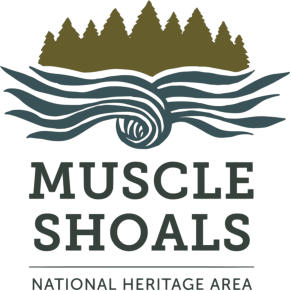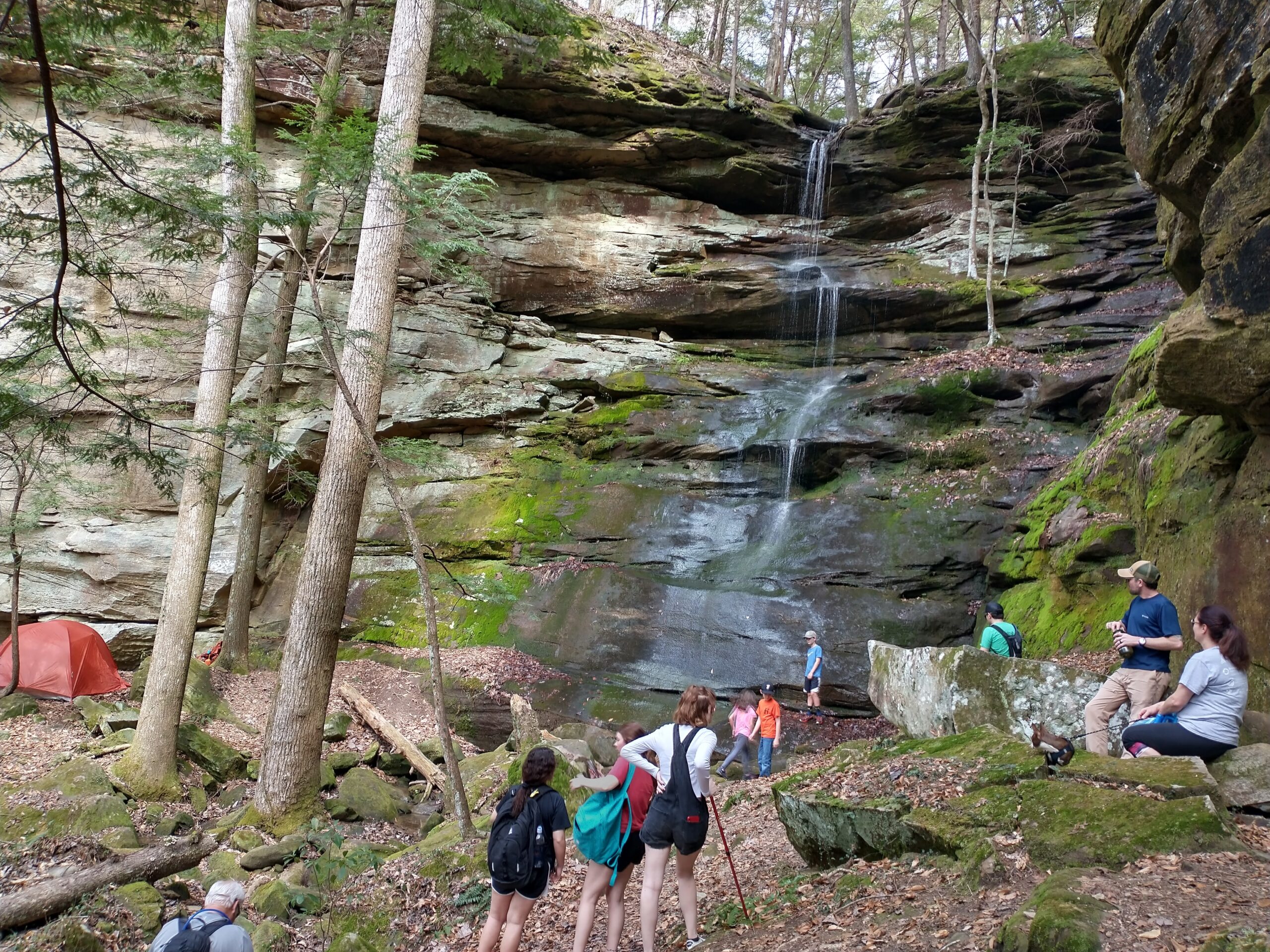A House Divided:
Lauderdale Countians and the Civil War
By Lee Freeman, Florence-Lauderdale Public Library, Local History-Genealogy Dept.
Florence’s Confederate monument outside the present (third) courthouse might cause one to think that Florence and Lauderdale County stood united during the calamitous upheaval which was the American Civil War. But such would be a mistake. The fact is that loyalties here were divided during the Civil War.
To begin with, the majority of voters in Lauderdale County, 790, supported moderate Democrat Stephen Douglass in the 1860 presidential election. Isaac and Silas Barr, editors of the “Florence Gazette,” spoke for the 706 voters who supported conservative Democratic candidate John C. Breckinridge, while 444 voters supported the Constitutional Union candidate John Bell of Tennessee.
Lauderdale’s delegates to the January, 1861, Secession Convention in Montgomery–the Hon. Sidney C. Posey and the Hon. Henry C. Jones–were both Douglass supporters and, as many other delegates from Alabama’s northern counties, cooperationists. As such they were “opposed to separate State secession, also opposed to the secession of the Gulf States, but in favor of a convention of all the southern States. Let them agree upon an ultimate demand of the northern States, and if said demand is refused, then agree to dissolve all connection with the northern States.” In other words, cooperationists took a wait-and-see attitude before they would call for secession. However, the northern Alabama delegates outvoted the southern Alabama delegates and Alabama voted to secede independently (though no popular vote was ever held). Lauderdale resident, state legislator and future governor (1865-1867) Robert M. Patton said, “This being the action of a large majority of the delegates, we cannot otherwise than acquiesce in it . . . Our will has been overruled by this decided majority, and now to withhold our acquiescence and take position adverse to the Convention, could but distract the public mind, and ultimately result in civil discord and disaffection among the people of our beloved State.” Thereafter Lauderdale County officially supported the state in secession.
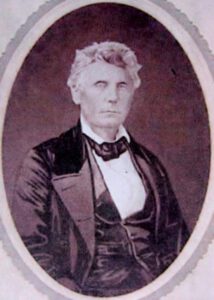

PHOTOS: Lauderdale County’s delegates to the 1861 Montgomery Secession Convention, the Hon. Sidney C. Posey (1803-1868), left, and the Hon. Henry C. Jones (1821-1913), right, were moderate Democrats and “cooperationists” opposed to separate state secession. Both men lost sons in the Confederate Army during the war.
But although Lauderdale County officially supported Alabama in secession, there was much Unionist sentiment across the county. For example, many men, such as 2nd Lt. Elias Thrasher (whose whole family were Unionists), joined the 2nd Tennessee Mounted Infantry, USA. Others joined the 1st AL Cav, USA in Winston County.


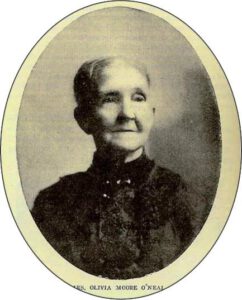
PHOTOS: Left, Capt. William A. “Billy” Patton (1837-1862) of Co C, 16th AL Inf, CS, killed at the Battle of Shiloh. Middle, 2nd Lt. Elias Thrasher (1823-1900) of Co. B, 2nd TN Mtd Inf, USA. Right, Mrs. Olivia Moore O’Neal (1819-1909), wife of Confederate general & future Democratic state governor (1882-1886) Edward Asbury O’Neal (1819-1890).
Perhaps unsurprisingly, just as local whites were divided in their loyalties, so were local blacks divided in theirs: some 31 Lauderdale County blacks, slave and free–most from the east end of the county–such as Anthony Brannon, of near Bailey Springs, enlisted in the 110th and 111th Inf, United States Colored Troops. Brannon enlisted in Co. H, 111th Inf, USCT, on April 30, 1864, and after the war received a Union military pension.
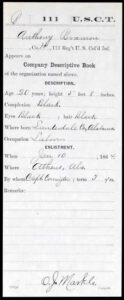
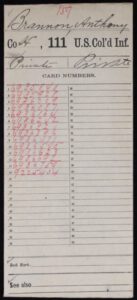

PHOTOS: Left, cards from Pvt. Anthony Brannon’s (1843-1929) Co. H, 111th Inf, USCT service records. Right, Henry Patton (1836-1901), a “quasi-free” slave of Sydney C. Posey. Patton “joined” the 10th TN Cav, USA for 18 months in 1864-1865, though in what capacity isn’t known as this was a white regiment (no service records have been located for Patton), not a USCT regiment; he may have been a body-servant to a white officer.
Alternatively, a handful of Lauderdale blacks served in Confederate regiments as cooks and body-servants. Several of these men, among them Reuben Patterson, specifically identified with the Southern cause and religiously attended local and national United Confederate Veterans reunions after the war. Patterson accompanied Morgan County native Col. Josiah Patterson, of the 5th AL Cav, CS, as his body-servant. Reuben was also the 5th AL’s company bugler, forager and unofficial “horse-swapper” (horse-thief). According to Patterson’s wife Abbie’s, 1926, obituary: “’Uncle Reuben’ wore the gray during the Civil War, and perhaps is the most unreconstructed ‘rebel’ in this section of the South.”
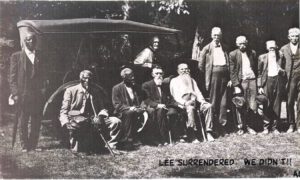
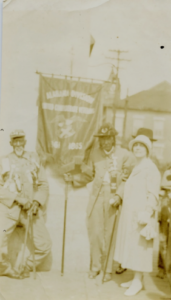
PHOTOS: Left, three of Lauderdale County’s eleven black Confederates, from Left, George W. Seawright (1848-1931); Reuben Patterson (1836-1928); and Peter Stewart (1825-1925) at the annual Mars Hill UCV reunion, August, 1921 from a Landrum Studios photo. Right, Reuben Patterson and Mrs. Lutie Patton (1889-1923) of Sweetwater with an unnamed Confederate veteran at a UCV reunion in the 1920s.
Still other local blacks, such as mulatto freedman and barber James Goin, were more pragmatic; at one point in the war Goin was assisted in evading Confederate conscript officers who were sending slave and free blacks to work in Confederate labor battalions in South Alabama by none other than James Jackson Jr., of Forks of Cypress. Paradoxically, in 1861 Goin was hired for three months by Washington Foster of Robert McFarland’s 4th AL Inf, CS, as its cook. Yet Goin, who ran unsuccessfully for Lauderdale County probate judge in 1874, filed a claim in 1871 with the Southern Claims Commission, a court established by the federal government to reimburse Southern loyalists for livestock and other provisions confiscated by the Union Army during the war. When asked whether his service in a Confederate mess was voluntary or under compulsion, Goin–who in his deposition also claimed to have assisted a female Union spy in reaching the Union lines–stated “why I went for money. They paid me forty dollars a month. I didn’t do any fighting. . . . I wasn’t caring which [side] whipped [the other] myself.”
After the war, although continuing to honor the “Lost Cause,” most local residents generally seem to have realized that the war was over, the South had lost and the best thing to do was to educate the freedmen and get them jobs. During the early part of Reconstruction, Florence had one Unionist, Neander H. Rice (also Alabama secretary of state, 1873-1874) as mayor (1869-1870; 1871-1873) and at least one, Thomas T. Allington, as probate judge (1868-ca. 1874). Florence also had at least two Grand Army of the Republic posts: Philip Sheridan Post No. 9 in 1889 and James S. Negley Post No. 18 in 1903. The Negely Post GAR and O’Neal Camp UCV often cooperated in memorial exercises and camp-fires. Also, many former Unionists, black and white, filed claims with the Southern Claims Commission. By the 1880s the house which had been divided had largely come together again. In accordance with the instructions, Valium shouldn’t be used for a long term in order to avoid drug dependence. When choosing Diazepam as a part of complex therapy, it is necessary to take into account that narcotic analgesics, neuroleptic, sleeping and antiepileptic drugs increase the effect of Diazepam. And if Valium interacts with clozapine, the effectiveness of treatment decreases.


PHOTOS: Left, Unionist Florence mayor (1869-1873) and AL Secretary of State (1873-1874) Neander H. Rice (1815-1886) and, right, Unionist Lauderdale probate judge (1868-ca. 1874) and Florence postmaster (1876-1879) the Hon. Thomas T. Allington (1810-1882). Though Unionists, both men were slave-owners before the war. ###
Florence native Lee Freeman has been the local historian-genealogist at the Florence-Lauderdale Public Library since 1997. The author of one book & several articles, he serves on local historical & historical preservation boards & is a sometime consultant for the MSNHA.
